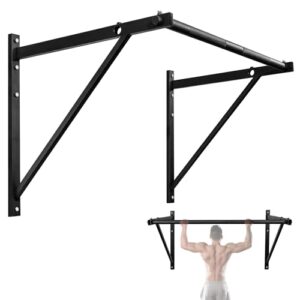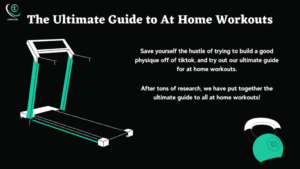Cardio weight training exercises combine cardiovascular and strength elements to enhance fitness. These workouts boost heart rate while building muscle.
Embarking on a fitness journey entails finding the right balance between cardiovascular health and muscle strength. Cardio weight training exercises, such as circuit training or high-intensity interval training (HIIT) with weights, are dynamic ways to achieve this harmony. They elevate your metabolism, increase endurance, and promote muscular growth.
Engaging in such routines not only burns calories but also sculpt and tones your body. Perfect for those striving for efficiency in their workout regimens, these exercises provide a two-pronged approach that maximizes the use of time spent in the gym. With each session, you’re taking a step towards a fitter, more resilient physique, making cardio weight training a preferred choice among fitness enthusiasts.

Credit: www.everydayhealth.com
Cardio Weight Training Synergy
Cardio weight training fuses the heart-pumping power of cardio with muscle-building strength exercises. This hybrid workout approach offers you the best of both worlds.
Blending Cardio And Strength Training
Blending cardio and strength training creates a comprehensive fitness routine. It’s like two workouts in one. Imagine boosting your stamina and sculpting your physique simultaneously. By combining these methods, exercises become more dynamic and time-efficient.
- Use compound movements like squats, lunges, and presses.
- Slide in quick cardio bursts between sets.
- Keep rest periods active with jump rope or jogging in place.
This blend keeps the heart rate up while targeting multiple muscle groups. Not just a calorie burner, it also enhances muscle endurance.
Maximizing Benefits With Combined Workouts
The magic happens when cardio and strength unite in one session. Maximizing benefits with combined workouts means getting fitter, faster, and stronger. It’s a strategy that makes every minute of exercise count.
| Cardio Segment | Strength Move | Outcome |
|---|---|---|
| 2-minute sprint | Deadlifts | Boosts metabolism, increases power |
| 1-minute jump rope | Push-ups | Improves endurance, builds upper body |
| 3-minute cycling | Squat presses | Enhances leg strength, tones arms |
Track your progress and adjust workouts for continuous improvement. Seek exercises that challenge both your cardiovascular system and muscle groups. Aim for a balance to prevent overtraining or neglecting any single aspect of fitness.

Credit: www.military.com
Starting With The Basics
Starting with the Basics in cardio weight training ensures a solid foundation for your fitness journey. By beginning at a level suited to your current abilities, you’ll gain confidence and prevent injuries. Grasping the essentials paves the way for a successful and sustainable workout regimen. Let’s step into the world of equipment and body awareness with these fundamental considerations.
Choosing The Right Equipment
Selecting equipment that aligns with your goals is crucial. Start small with adjustable dumbbells or resistance bands. These offer versatility without taking up much space. Consider a stability ball for core exercises and a yoga mat for comfort.
| Equipment | Use |
|---|---|
| Adjustable Dumbbells | Strength and endurance |
| Resistance Bands | Flexibility and toning |
| Stability Ball | Core strengthening |
| Yoga Mat | Comfort for floor exercises |
Understanding Your Body’s Limits
Listen to your body as you start your cardio weight training. Recognizing the difference between good pain, like muscle fatigue, and bad pain, signaling harm, is essential. Always warm up before lifting and cool down after.
- Begin with lighter weights to master form.
- Gradually increase intensity to prevent strain.
- Rest is crucial for recovery – don’t skip it!
Acknowledge your starting point and aim for progressive improvement. Remember, rushing can lead to setbacks. Patience is your ally in building strength and cardiovascular health.
Designing Your Workout Plan
Cardio weight training combines the heart-pumping benefits of cardio with the muscle-building potential of weight training. Crafting a workout plan tailored to your goals is essential. Your plan needs balance, variation, and scheduling for peak effectiveness. Let’s dive into structuring sessions and integrating critical rest periods.
Structuring Cardio Weight Sessions
To achieve maximum results, structure is key. Start with warm-up exercises like dynamic stretching or a brisk five-minute walk. Follow this with a mix of resistance training and cardio. Use the principle of HIIT by alternating between high-intensity weights and cardio bursts.
- Begin with compound exercises like squats or bench presses.
- Follow with a short, intense cardio interval such as jumping jacks.
- Alternate between strength and cardio intervals for 30 to 45 minutes.
Remember to end with a cooldown to help muscles recover. Try light jogging or stretching. Keep workouts diverse to target different muscle groups and prevent boredom.
| Time | Activity | Intensity |
|---|---|---|
| 5 min | Warm-up (walk) | Low |
| 20 min | Weight Training | High |
| 5 min | Cardio Burst | High |
| 20 min | Weight Training | High |
| 5 min | Cooldown | Low |
Incorporating Rest And Recovery
Rest and recovery are as vital as the workout itself. They allow your body to heal and grow stronger. Aim for at least one full rest day a week. On rest days, engage in passive or active recovery.
- Passive recovery could be a full day of rest or gentle stretching.
- Active recovery could involve lighter activities, like walking or swimming.
Listen to your body. If you feel sore or fatigued, consider adding extra rest days. Balance intense workouts with enough recovery time for the best results.
Exercise Selection For Synergistic Training
Synergistic training combines cardio and weights to improve fitness and burn fat. Selecting the right exercises ensures every workout counts.
Compound Movements For Maximum Effect
Compound exercises work multiple muscle groups at once. They boost heart rate and save time. Examples include squats, deadlifts, and bench presses. Using these in a routine increases calorie burn and muscle strength.
- Squats: Legs, back, and core get a solid workout.
- Deadlifts: They target the whole posterior chain.
- Bench Presses: Work the chest, arms, and shoulders.
Cardio Intervals With Weights
Mixing cardio intervals with weights makes the heart pump faster. This combo leads to more fat loss and muscle tone. Try circuits with dumbbells or kettlebells.
| Exercise | Equipment | Duration |
|---|---|---|
| Dumbbell lunges | Dumbbells | 1 min |
| Kettlebell swings | Kettlebell | 1 min |
| Dumbbell thrusters | Dumbbells | 1 min |
Rest for 30 seconds between exercises. Repeat the circuit 3-5 times.
Monitoring Your Progress
Monitoring Your Progress in cardio weight training exercises is vital to ensure you’re on track to reach your fitness goals. Seeing tangible evidence of your hard work can be incredibly motivating. Whether you’re looking to boost your stamina, increase your strength, or both, keeping an eye on your achievements helps refine your exercise regimen for better results.
Tracking Stamina And Strength Gains
Understanding your progress in both stamina and strength is key. To effectively track these improvements, consider the following methods:
- Log your workouts: Note the exercises, weights, sets, and reps.
- Use a fitness app: Many apps can track your progress over time.
- Conduct regular fitness tests: Perform standardized tests monthly to measure improvements.
By consistently recording your data, you will see which aspects of your workouts are propelling you forward, and which might require tweaking. This record acts as a roadmap to hit your targets with precision.
Adjusting Intensity And Volume
As you get stronger and more enduring, you must adjust your training for continued progress. Consider these strategies:
- Increase weights gradually as strength improves.
- Add more reps or sets to increase volume.
- Vary your exercises to target different muscle groups.
- Integrate interval training to boost cardiovascular fitness.
Adjusting these aspects helps you avoid plateaus, ensuring your body always has a reason to adapt and grow stronger. It’s essential to make these changes methodically to prevent overtraining and injury.

Credit: www.vogue.in
Fueling For Combined Training
When cardio meets weight training, your body’s fuel needs amplify. The right nutrition and hydration strategies are crucial. They ensure optimal performance and recovery. Let’s dive into how you can nourish your body effectively.
Nutritional Needs For Recovery
After a grueling combined training session, your muscles crave recovery. Protein steps up, aiding in repair. Not to forget, carbohydrates help replenish depleted energy stores.
- Protein intake is vital for muscle repair.
- Carbohydrates refuel energy reserves.
- Fats should not be neglected, as they are important for overall health.
Consider the timing too. A mix of carbs and protein, ideally within 30 minutes post-workout, kicks off recovery efficiently.
Hydration Strategies For Endurance
Staying hydrated is non-negotiable. It’s essential for maintaining endurance as you transition from the treadmill to the weight rack.
- Start workouts well-hydrated; drink water throughout the day.
- Sip on water or a sports drink every 15 minutes during exercise.
- Don’t ignore thirst cues; they signal your body’s need for fluids.
Post-workout, replacing lost fluids is a must. Your urine color is a handy hydration indicator. Aim for a pale yellow, a sign you’re on the right track.
Avoiding Common Pitfalls
Cardio weight training is a powerful way to enhance fitness. Yet, many enthusiasts fall into traps that hinder progress. Recognizing these pitfalls is key to a successful routine. This section helps you steer clear of common mistakes, ensuring your workout remains effective and safe.
Balancing Intensity To Prevent Burnout
Moderation is crucial. Ambitious goals can lead to excessive intensity. Excessive intensity can lead to burnout. A balanced routine sustains progress without overwhelming the body.
- Alternate between heavy and light days.
- Mix high-intensity cardio with lower-intensity sessions.
- Rest is as important as active days.
- Listen to your body and adjust accordingly.
Recognizing Overtraining Symptoms
Know the signs of overtraining to stay on track. Persistent soreness, fatigue, and plateaued results signal overtraining. Act fast to correct course.
| Symptom | Action |
|---|---|
| Persistent Muscle Soreness | Take extra rest days and focus on recovery. |
| Reduced Performance | Decrease intensity or volume temporarily. |
| Chronic Fatigue | Ensure proper nutrition and sleep. |
| Irritability or Depression | Consult a professional and consider stress-relief techniques. |
By recognizing and addressing these signs, you maintain a healthy training regimen. Avoid the perils of overtraining and continue reaping the benefits of your efforts.
Frequently Asked Questions On Cardio Weight Training Exercises
What Is Cardio Weight Training?
Cardio weight training combines cardiovascular exercise with strength training. It involves using weights in a way that raises the heart rate. This method helps improve cardiovascular health while building muscle.
Best Exercises For Cardio Weight Training?
Effective exercises include kettlebell swings, dumbbell thrusters, and barbell complexes. They engage multiple muscles and increase heart rate, which maximizes fat burn and muscle building.
Can You Lose Fat With Cardio Weights?
Yes, you can lose fat with cardio weight training. It elevates your metabolism, burns calories, and helps in shedding fat while preserving muscle mass for a toned appearance.
How Often Should I Do Cardio Weights?
For balanced fitness, aim for 2-3 sessions of cardio weight training weekly. This frequency allows for recovery while optimizing the benefits of the combined training approach.
Conclusion
Wrapping up, we’ve explored the impact of cardio weight training for a fitter, stronger you. Embrace these exercises to boost endurance and sculpt muscle. Remember, the blend of cardio and weights can redefine your fitness game. Start small, stay consistent, and watch the transformation unfold.
Ready, set, lift!
















